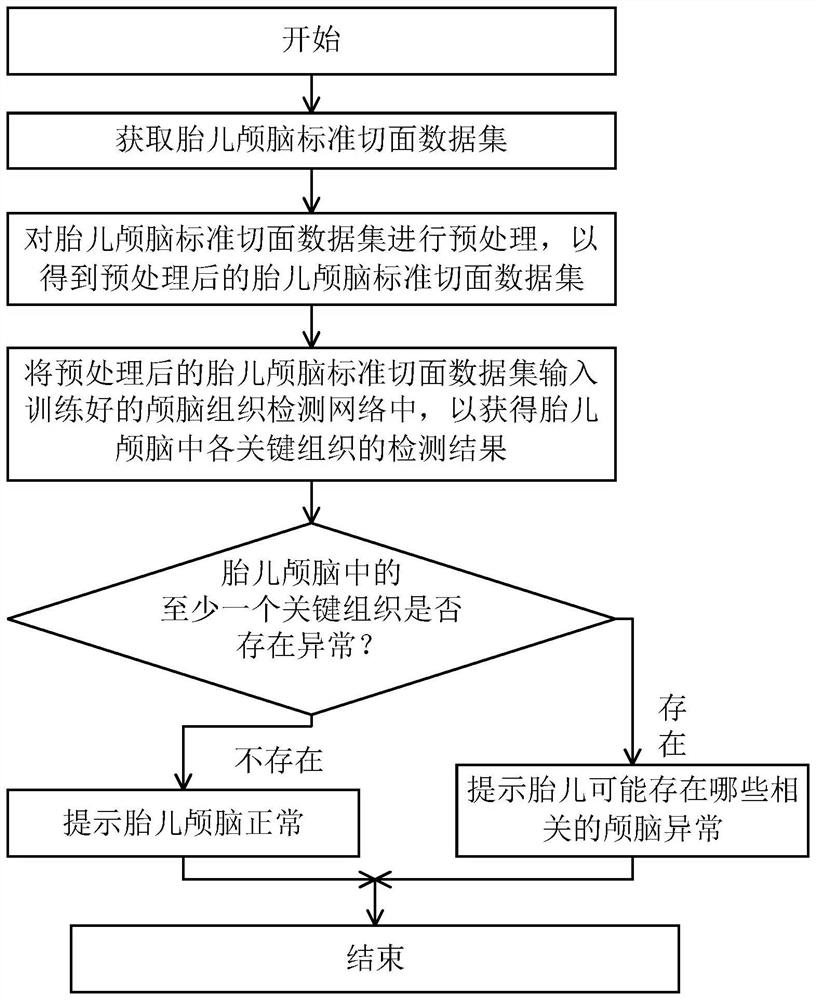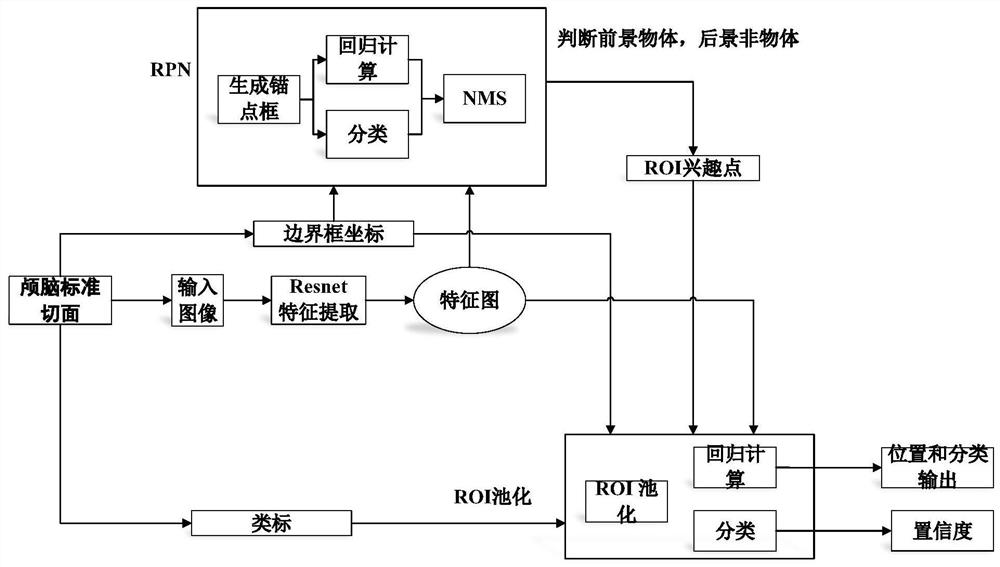A Machine Learning-Based System for Detecting Fetal Brain Abnormalities
A machine learning and cranial brain technology, applied in organ movement/change detection, neural learning methods, instruments, etc., to achieve the effects of ensuring high accuracy, reducing work tasks, and alleviating imbalances
- Summary
- Abstract
- Description
- Claims
- Application Information
AI Technical Summary
Problems solved by technology
Method used
Image
Examples
Embodiment Construction
[0054] In order to make the object, technical solution and advantages of the present invention clearer, the present invention will be further described in detail below in conjunction with the accompanying drawings and embodiments. It should be understood that the specific embodiments described here are only used to explain the present invention, not to limit the present invention. In addition, the technical features involved in the various embodiments of the present invention described below can be combined with each other as long as they do not constitute a conflict with each other.
[0055] Such as figure 1 As shown, the present invention provides a method for detecting fetal brain abnormalities based on machine learning, comprising the following steps:
[0056] (1) Obtain standard cross-section data sets of fetal brain in different gestational age series;
[0057] Specifically, the fetal brain standard section data set is composed of multiple standard section images of th...
PUM
 Login to View More
Login to View More Abstract
Description
Claims
Application Information
 Login to View More
Login to View More - R&D
- Intellectual Property
- Life Sciences
- Materials
- Tech Scout
- Unparalleled Data Quality
- Higher Quality Content
- 60% Fewer Hallucinations
Browse by: Latest US Patents, China's latest patents, Technical Efficacy Thesaurus, Application Domain, Technology Topic, Popular Technical Reports.
© 2025 PatSnap. All rights reserved.Legal|Privacy policy|Modern Slavery Act Transparency Statement|Sitemap|About US| Contact US: help@patsnap.com



